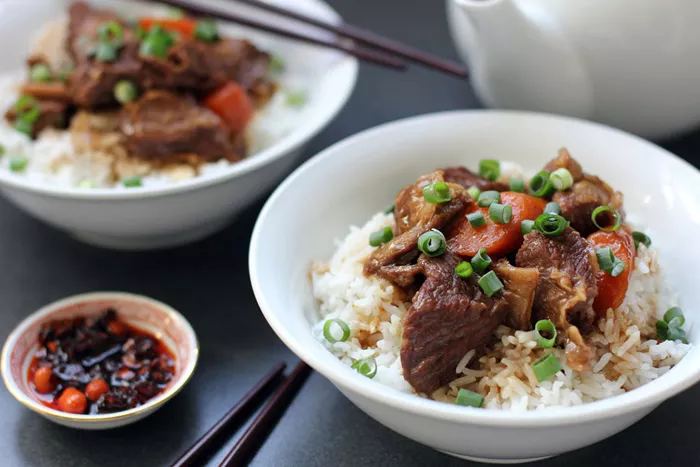Beef dishes in Chinese cuisine are celebrated for their bold flavors, tender meat, and exquisite balance of textures. Whether it’s the succulent strips of beef in a stir-fry or the rich broth of a beef noodle soup, Chinese-style beef recipes offer a delicious and diverse culinary experience. In this comprehensive guide, we will explore the techniques, ingredients, and step-by-step instructions to help you master the art of cooking beef Chinese style. From the classic stir-fries to flavorful braised dishes, you’ll discover a wide array of preparations and flavors that will satisfy your taste buds and elevate your cooking skills.
Choosing the Right Cut of Beef
Before diving into the preparation and cooking methods, it’s essential to select the right cut of beef for your Chinese-style dish. Different cuts offer distinct textures and flavors, so let’s explore some of the most commonly used choices:
Flank Steak: This lean and flavorful cut is perfect for stir-fries. It cooks quickly, and when sliced thinly against the grain, it’s tender and juicy.
Ribeye: Ribeye steaks, with their marbling, provide a rich and buttery flavor. They are suitable for grilled or pan-seared dishes.
Sirloin: Sirloin cuts are versatile and can be used in various preparations. They are relatively tender and well-suited for stir-fries, grilling, or braising.
Short Ribs: If you’re planning a slow-cooked or braised beef dish, short ribs are an excellent choice. They become incredibly tender and flavorful over extended cooking times.
Ground Beef: Ground beef is commonly used in Chinese-style meat sauces, dumplings, and stuffed dishes.
The choice of beef cut should align with the specific Chinese dish you’re preparing. Keep in mind that the way you cut the meat, such as slicing it thinly against the grain, can significantly affect its tenderness and texture.
Marinating and Flavoring the Beef
Marinating beef is a crucial step in Chinese-style cooking, as it infuses the meat with a harmonious blend of flavors. Here’s a basic marinade you can use as a foundation:
Ingredients for Basic Beef Marinade:
Soy Sauce: 2 tablespoons
Oyster Sauce: 1 tablespoon
Rice Wine or Sherry: 2 tablespoons
Cornstarch: 1 teaspoon (for velveting the beef)
Sugar: 1 teaspoon
Sesame Oil: 1 teaspoon
Garlic: 2 cloves (minced)
Ginger: 1-inch piece (minced)
Instructions:
In a mixing bowl, combine the soy sauce, oyster sauce, rice wine or sherry, and sugar. Mix until the sugar dissolves.
Add the minced garlic and ginger to the sauce and stir to incorporate.
In a separate bowl, coat the beef with cornstarch to create a velvety texture.
Add the cornstarch-coated beef to the marinade, ensuring that each piece is evenly coated.
Cover the bowl and refrigerate for at least 30 minutes to allow the flavors to meld.
The above marinade serves as a fantastic base, but feel free to add additional ingredients like black bean sauce, hoisin sauce, or chili paste to create unique flavors based on your preference and the specific dish you’re preparing.
Cooking Techniques for Chinese-Style Beef
Stir-Frying: Stir-frying is one of the most popular methods for cooking beef in Chinese cuisine. It involves quickly cooking thinly sliced beef in a hot wok or skillet with a small amount of oil. The high heat and constant stirring ensure that the beef cooks rapidly, retaining its tenderness and flavor. Vegetables and sauces can be added to create a delicious stir-fry.
Braising: Braising involves slow-cooking beef in a flavorful liquid until it becomes incredibly tender and absorbs all the rich flavors. Chinese-style beef braises are often simmered in a combination of soy sauce, spices, and aromatics until they reach a melt-in-your-mouth consistency.
Steaming: Steaming is a healthier option that preserves the natural flavors and nutrients of the beef. Thin slices of marinated beef are placed in a steamer and cooked over boiling water, producing a delicate and tender result.
Grilling: Grilling beef is a popular method for preparing skewers or barbecue dishes in Chinese cuisine. The smoky charred flavor adds a unique dimension to the meat, which can be served with various dipping sauces.
Hot Pot: Hot pot is a communal dining experience where thinly sliced beef and other ingredients are cooked in a simmering broth at the dining table. The beef cooks quickly and is then dipped into a dipping sauce for added flavor.
Key Ingredients and Seasonings
To master Chinese-style beef cooking, it’s essential to have a well-stocked pantry with the key ingredients and seasonings commonly used in these recipes:
Soy Sauce: A fundamental component of Chinese cuisine, soy sauce adds saltiness and a depth of flavor to your dishes. Light soy sauce is used for seasoning, while dark soy sauce is primarily for color.
Oyster Sauce: Oyster sauce is thick, savory, and slightly sweet. It’s commonly used in stir-fries and as a base for many Chinese sauces.
Hoisin Sauce: Hoisin sauce is a sweet and tangy condiment that’s perfect for marinating, glazing, or as a dipping sauce.
Black Bean Sauce: Fermented black bean sauce is a pungent and salty condiment often used in stir-fries.
Sesame Oil: Toasted sesame oil imparts a nutty aroma and flavor to dishes. It’s used sparingly as a finishing touch.
Rice Wine or Sherry: Rice wine and sherry add depth and complexity to sauces and marinades.
Ginger and Garlic: Fresh ginger and garlic are essential aromatics used in almost every Chinese-style beef dish.
Five-Spice Powder: A blend of spices, including star anise, cloves, and cinnamon, adds a distinctive flavor to many Chinese dishes.
Rock Sugar: Rock sugar is traditionally used to sweeten Chinese broths and sauces. Regular sugar can be substituted if necessary.
Star Anise and Cinnamon: These aromatic spices are often used in braised beef dishes, lending rich, warm flavors.
Balancing Flavors in Chinese-Style Beef
Chinese cuisine is renowned for its balance of flavors, often described as the “yin and yang” of taste. The key elements of flavor in Chinese cooking are:
Salty: Achieved through ingredients like soy sauce, oyster sauce, and salt, saltiness forms the foundation of many Chinese dishes.
Sweet: Sweetness can come from sugar, hoisin sauce, and sweet fruits like dates or plums. It balances out the salty components.
Sour: Sourness is often added with vinegar, citrus, or pickled vegetables. It provides a contrast to the richness of the meat.
Bitter: Bitterness can be introduced through vegetables like bitter melon. It’s less commonly used but adds complexity to certain dishes.
Umami: Umami, the fifth taste, is present in ingredients like soy sauce, oyster sauce, and mushrooms. It enhances the overall depth of flavor.
Chinese Regional Beef Dishes
Chinese cuisine is incredibly diverse, with each region offering unique and distinctive beef dishes. Here are a few regional examples:
Sichuan Beef: Sichuan cuisine is known for its bold and spicy flavors. Sichuan beef dishes often incorporate chili peppers, Sichuan peppercorns, and garlic, resulting in a tongue-tingling experience.
Beijing Shredded Beef: This dish features thinly sliced beef, marinated and quickly stir-fried with julienned vegetables, including bamboo shoots, carrots, and bell peppers. It’s typically seasoned with hoisin sauce and soy sauce.
Cantonese Beef Chow Fun: A famous dish from Canton (Guangdong), this dish consists of wide rice noodles stir-fried with beef and vegetables in a savory sauce. It’s simple yet delicious.
Taiwanese Beef Noodle Soup: A Taiwanese specialty, this hearty soup features tender braised beef, often with a rich and slightly spicy broth. It’s typically served with wheat noodles and pickled mustard greens.
Xinjiang Lamb Skewers: While not beef, Xinjiang cuisine is known for its skewered meats, including lamb and beef. These skewers are marinated in a blend of spices and grilled to perfection.
Common Mistakes to Avoid
When cooking beef Chinese style, there are a few common mistakes to avoid to ensure your dishes turn out perfectly:
Overcooking Beef: Beef should be cooked just until it’s no longer pink. Overcooking can result in tough and dry meat.
Not Slicing Thinly Against the Grain: When slicing beef, make sure to cut against the grain for tenderness. Slicing with the grain can result in chewy meat.
Skipping the Marinade: Marinating beef is essential for flavor infusion. Skipping this step can lead to bland dishes.
Using the Wrong Cut: Using the wrong cut of beef for a specific dish can affect the texture and flavor. Be mindful of the cut you select.
Overcrowding the Pan: When stir-frying, avoid overcrowding the pan, as it can lead to steaming rather than searing the beef.
Neglecting Flavor Balance: Be conscious of balancing sweet, salty, sour, and umami flavors to create a harmonious dish.
Neglecting Presentation: Chinese cuisine places importance on the visual appeal of a dish. Take time to plate and garnish your beef dishes thoughtfully.
By avoiding these common mistakes, you can elevate your Chinese-style beef dishes and enjoy restaurant-quality results at home.
Conclusion
Cooking beef Chinese style is an art that combines a rich culinary tradition with diverse flavors and techniques. From tender stir-fries to flavorful braised dishes, the world of Chinese beef cuisine offers a multitude of culinary adventures.


















